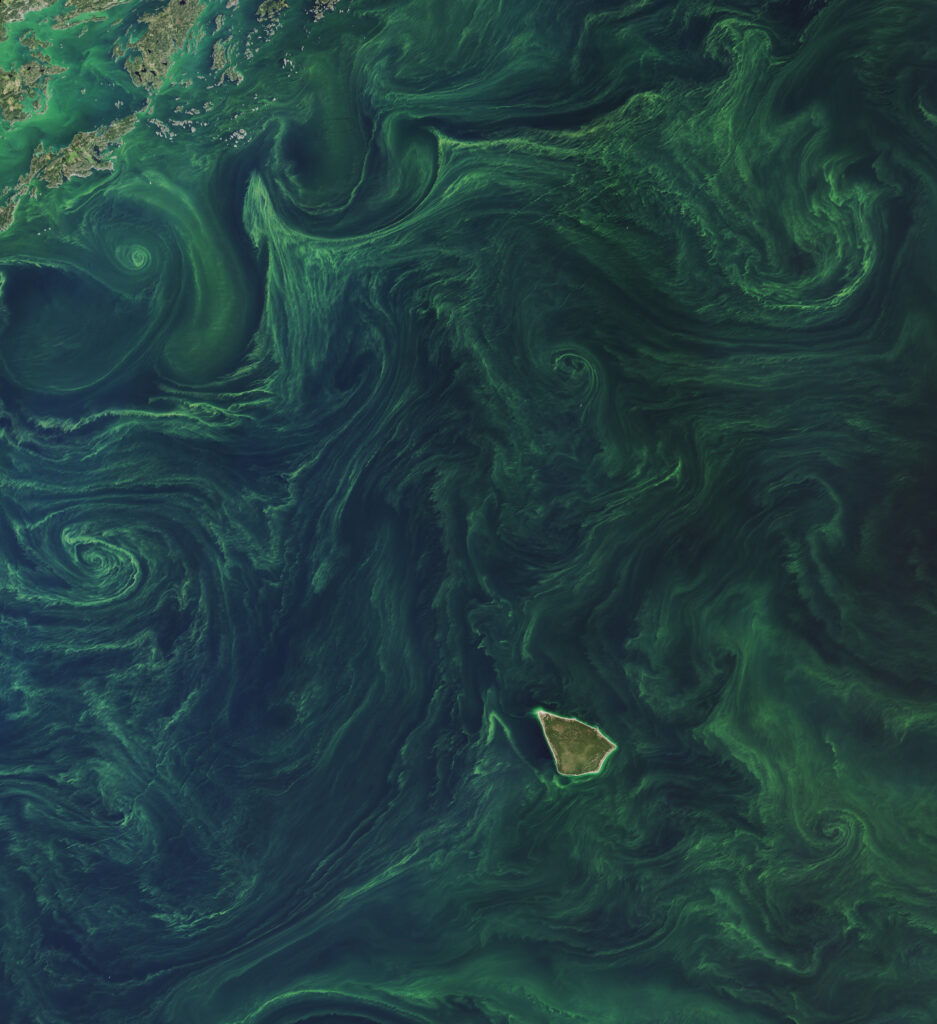This image shows a phytoplankton bloom in the Baltic Sea this summer. The phytoplankton act like seed particles in the water, which allows us to see the swirling patterns from currents, wind, and other gradients. When zooming in on the image, there are straight lines showing wakes from boats. This image is really interesting because the phytoplankton allow us to capture otherwise invisible fluid dynamics within the ocean. The image comes from a U.S. geological survey satellite called the Landsat 9. It was captured by Michala Garrison.
Image Attribution: NASA Earth Observatory images by Michala Garrison, using Landsat data from the U.S. Geological Survey.
Link to NASA Earth Observatory Article: https://earthobservatory.nasa.gov/images/154581/brilliant-bloom-in-the-baltic-sea?__readwiseLocation=


7 Comments. Leave new
Third Prize – This image looks great, but it also is very demonstrative of the flow of water around undersea landmasses.
Second Prize: This image has incredible artistic value, the green color is amazing. You can really get a sense of the motion from this still.
First Prize: Large scale ocean photography is one of my favorite visuals. The large flow patterns created by the phytoplankton contain a very large amount of fine details which draw the eyes in. The large vortices in particular are very fascinating.
First Prize: I really like both the colors and flow patterns present in this photo. It really stands out.
First Prize: For my job, I deal with a lot of aerial photographt and this one captures my eye more than anything else. The scale of the phytoplankton bloom trule represents the world we live in and how we may never expeirence art like this because the world is so large.
Third Prize: I love the patterns that this flow illustrates, and the natural color that the phytoplankton have. It’s especially cool to me to be able to see where the plankton form vortices.
First Prize: I like how this image captures multiple interesting structures and shows how the flows connect them. I also love thinking of the scale of this picture and how it uses small phytoplankton to capture these larger features.